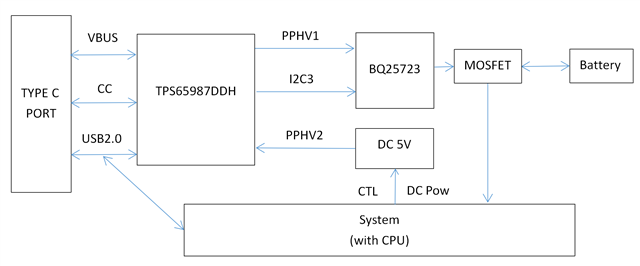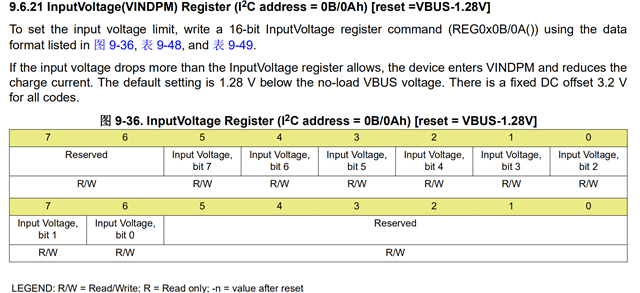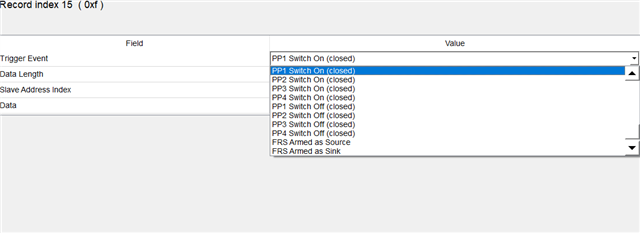Other Parts Discussed in Thread: BQ25723, TPS65987, BQSTUDIO, EV2400
Tool/software:
Hi all,
We used the design scheme of TPS65987D+BQ25723 and the charging function is tested normally.
Now we have a problem, our board power consumption is close to 15W, and when connecting to a PC host via USB with the battery connected, there will be a host prompting for a USB power surge.
So we wanted to leave PPHV1 unconnected when we plugged into the PC host, which would allow the battery to power the system, thus avoiding USB power surges on the host.
That is, we want to turn on PPHV1 only when the TPS65987D negotiates the PD protocol.
I hope you can tell me how to realize the above requirements.
Appreciate it!
Xavier.




